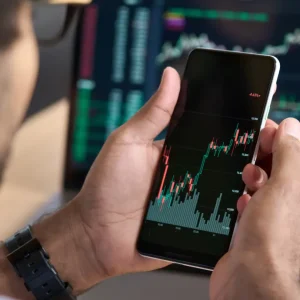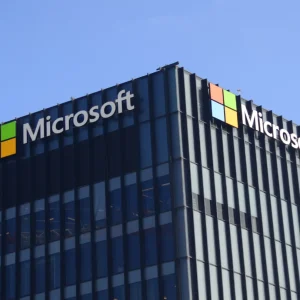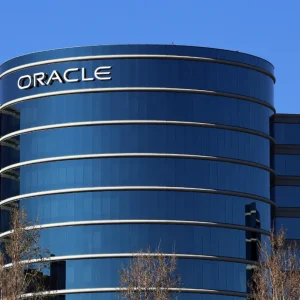
As first birthdays go, NTT Ltd’s has been much like any other socially isolated infant: stuck at home, few friends around; a lonely balloon or two for company. This is no ordinary one-year-old though: it’s a mammoth $11 billion IT heavyweight made up of 31 companies that are still in the process of being knitted together by CEO Jason Goodall after a merger last summer.
(The NTT Group has 17,000 patents to its name; second only to IBM in the technology world, and telecommunications infrastructure in 190 countries around the world. As Goodall told us last year: “I wouldn’t say every single local loop, but we’ve probably got 70% coverage on our own infrastructure.)
We heard in some depth from Goodall in 2019 about this tactical decision by Japan’s NTT Group to bring a range of security, data, services and more companies together under one roof as NTT Ltd, with an HQ in London. The big idea: boost efficiencies, improve margins and ramp up cross-selling. (The move included a £500 million investment in two UK data centres; opening in Dagenham in September 2020; part of a $7 billion global DC investment).
Large business integrations are challenging at the best of times. How has the move to bring 40,000+ staff into one cohesive entity gone amid a pandemic? What’s it been like trying to manage this as a CEO working remotely? With NTT Ltd’s unique insight into CIO’s budgets at a sweeping scale, what’s the outlook for IT spending? We caught up with Jason to ask these questions and more.
Jason, how’s it been tackling this merger amid a pandemic?
I guess we’re fortunate that we had about six to eight months of uninterrupted work before the world went crazy on us. And in a relatively short space of time, we actually achieved a lot. [But] a lot of the heavy lifting work, which goes kind of behind the scenes? That’s still a work in progress and probably going to be a two to three year journey; there’s no question that obviously the environment that we are in makes some of that work more difficult.
Name one of the biggest merger challenges?
Getting all of our data sorted. Documenting your standard processes, aligning those processes; this is the biggest integration of companies by the IT industry to-date and… you want to try and get a single view of your data.
That’s very, very complex, from systems to formats. You might have a company that you acquired in Asia who is using a bespoke HR system, versus someone in America who is using SuccessFactors and so. Working towards getting a single view of all your skills and capability is a big task.
We might call someone a “solution architect”. The exact same job in a sister company might be called a “service architect”.
It seems like a minor thing, but at scale working through this to design a data structure is not. Some of these companies are 50, 40 years old.
You’re talking about millions of records. This general hygiene that people don’t talk about in integration projects is not the fun stuff. But the quality of that data is crucial to being able to automate stuff; to be able to self-serve.
How have you found, as a CEO, leading this transition remotely?
In the first nine months I clocked up I don’t know how many miles; thank goodness. My style was to try and get out, get known and bring people together a lot. We spent a lot of time and effort in making sure that we started to work physically together [across the 31 companies]. I think we built up a lot of those relationships then that have kept us going as we moved to remote.
Candidly, I think the first two or four months in remote, I’ve been okay.
[But] if you were to ask me now, I think we’re starting to see diminishing returns of being able to work remotely. What I’m certainly seeing both personally — the way I am leading and managing this company, as well as just being in conversation through others — is that you definitely need a combination of the physical as well as the remote. We’re starting to struggle, not being able to get around a table and really debate some complex issues.Remote working is a very, very effective tool for for certain tasks that are very isolated, obviously, because you can concentrate, focus and get things done. It works very well for information sharing. But when you need robust debate and you’ve got disagreement that you’ve got to figure out, being in the same room and having that conversation in real-time is important.
What have you seen from customers in terms of spend?
Obviously there’s been a shift in emphasis and budgets. You’ve seen the meme: ‘What are the main drivers of your digitalisation strategy? CEO, CIO, CTO, COVID?’ It is COVID. It’s been like a time machine has accelerated the move to a digital world by three, four, five years. We are responsible and accountable for some pretty mission-critical services on behalf of our customers.
So we spent a lot of time early in the outbreak making sure that all of our disaster recovery, business continuity processes kicked in. In some cases, you had to shore up some of your own backbone technology to enable that.
We’ve helped 500,000 people to work from home, for example, within our customer environment. We’ve rolled out hundreds of thousands of VPN connections. Our conferencing and remote broadcast business volumes went up for four-fold. But on the negative side, a lot of our customers are just kind of almost trying to stop everything. They’re in a holding pattern.
They’re trying to buy time.
So a lot of the sort of big roll-out opportunities, technology refresh stuff? Businesses are pretty keen to wait and see. And you haven’t been able to actually access a lot of the customer environment. So certain things have not been practically possible at this point in time. Any sort of physical deployment has been very, very difficult. Anything that doesn’t enable their business to perform through these different working conditions has been put on hold.
Talking of spending, you made some early aquisitions. Will NTT Ltd. be investing in this market at all?
Probably not. I wouldn’t know where to start. How do you value an asset at this time? I’m sure there are some no-brainers, but we are not actively looking. But it’s certainly something we’ll consider medium to long term. We announced last July plans to invest $7 billion. The timing of that has been affected by the pandemic but the strategy remains the same.
Your focus for the next few months?
Keeping our teams motivated, productive and safe. There’s a lot of work that we are doing through HR to try and figure out better ways to do that.
Secondly, working out how best to spot future opportunity in this remote world as we go forward and building, improving our digital pipelines. That obviously ties very much into into the sustainability of all of us as a business.
And we have scenarios, I guess, around what do we need to do from a cost base perspective, depending on what the impact is going to be, frankly, on our revenue as we go forward. So I guess those are the three areas that we are going to continue to focus for the next two to three months.






